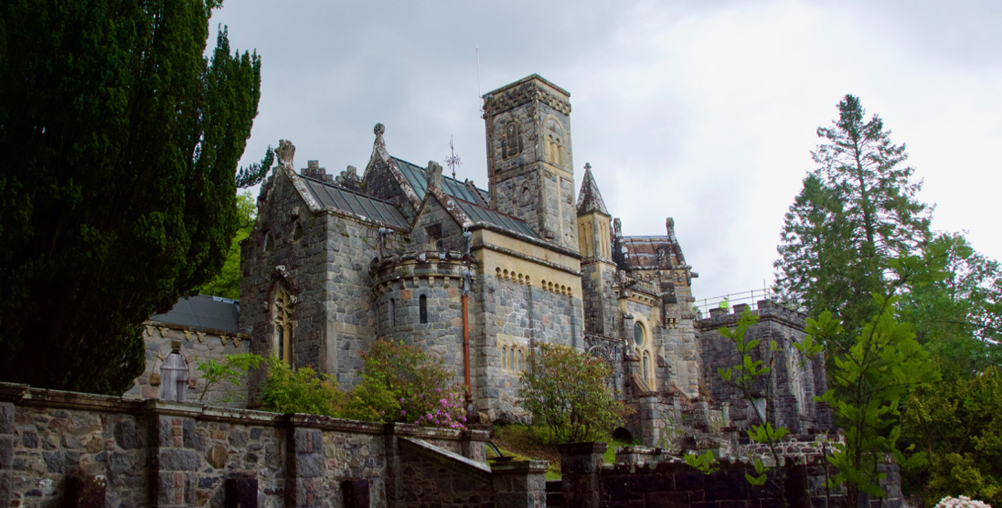
St Conan’s Kirk
One of the familiar sights as you drive beside Loch Awe on your way from Crianlarich to Oban is a grey stone church, set down from the road and overlooking the shore. In summer it looks like a cool sanctuary, and in winter its windows glimmer with the promise of a warm welcome. I’ve often wondered about its origin and history, and just recently I had a fantastic opportunity to find out more.
At the kind invitation of the Friends of St Conan’s Kirk, I was shown around by Peter Hennessy, who shared his in-depth knowledge of the building and allowed me to see some areas that are currently off-limits to visitors. It was the middle of June, and the weather was typically Scottish – fleeting views of blue sky, interspersed with torrential downpours.
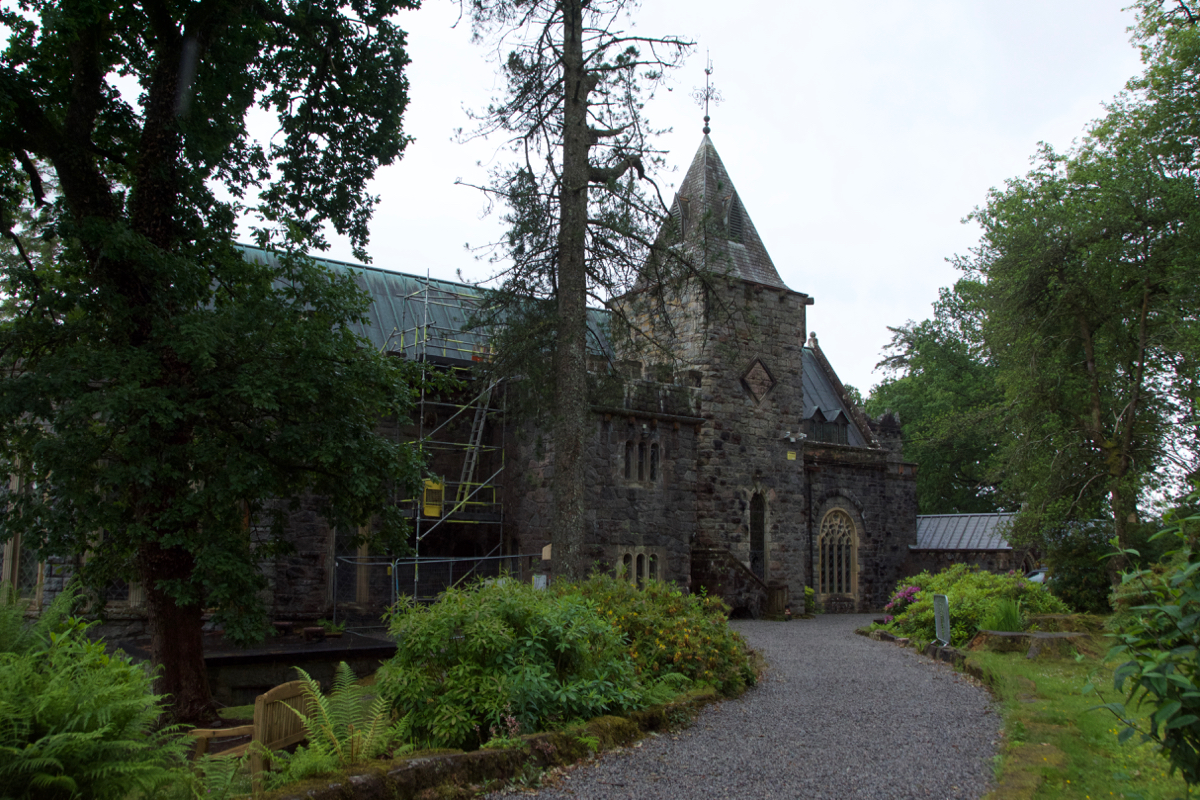
Walter Douglas Campbell
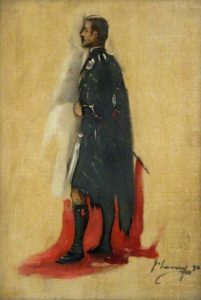
Any story of St Conan’s Kirk has got to begin with its creator, Walter Douglas Campbell. Walter was born in 1850, the eighth of nine children of Archibald Douglas Campbell and Caroline Agnes Dick of Inchinnan in Renfrewshire. Walter’s oldest brother, Archibald, was created 1st Baron Blythswood in 1892. While some of his brothers embarked on a military career or entered the ministry, Walter trained as an architect.
By the late 1800s, the railways were opening up parts of Scotland that were previously only accessible by a long and arduous road journey… and, of course, Queen Victoria’s passion for the Highlands was shared by many of her contemporaries. Walter’s mother, Caroline, acquired some land beside Loch Awe from the Marquis of Breadalbane, and on Innis Chonain, a little island in the loch, Walter designed a fine mansion house as her summer home. Caroline was deeply religious but disliked having to make regular treks to Taynuilt for worship, so Walter decided to build her a church right on her doorstep. This is how the idea for St Conan’s was born.
Why St Conan?
In this area there is a long-standing connection with St Conan, one of the many missionary-saints who came to Scotland from Ireland in the wake of St Columba. St Conan is reputed to have lived in Glen Orchy, and at Dalmally there is a holy well which bears his name. As a young man he is said to have been a tutor to the sons of a king – presumably one of the kings of Dál Riata whose power centre was at Dunadd – and eventually rose to become a bishop. Although the name Innis Chonain suggests that the island bears his name, I can find no record of any surviving archaeological remains here, such as an early chapel. Nevertheless, in choosing the dedication for his kirk – a Scots word which means ‘church’ – Walter Douglas Campbell was honouring an ancient Christian connection with Loch Awe.
Having designed and built a comparatively simple kirk for the convenience of his mother, Walter was still not satisfied and in 1907 he began to enlarge and embellish his original design. So ambitious was his scheme that the improvements were still not complete in 1914, when he died; his sister, Helen, supervised the work until her own death in 1927. The kirk was completed under the 4th Lord Blythswood in 1930. Progress during this time was slow, because of the lack of skilled craftsmen during the Great War, and the fact that it was Walter’s wish that the workforce should be local people.
“The Church is being built of granite from boulders taken from Ben Cruachan, split through, and brought down the side of the mountain…”
Sir John Samuel KBE, from Glasgow Herald, 31st March 1923
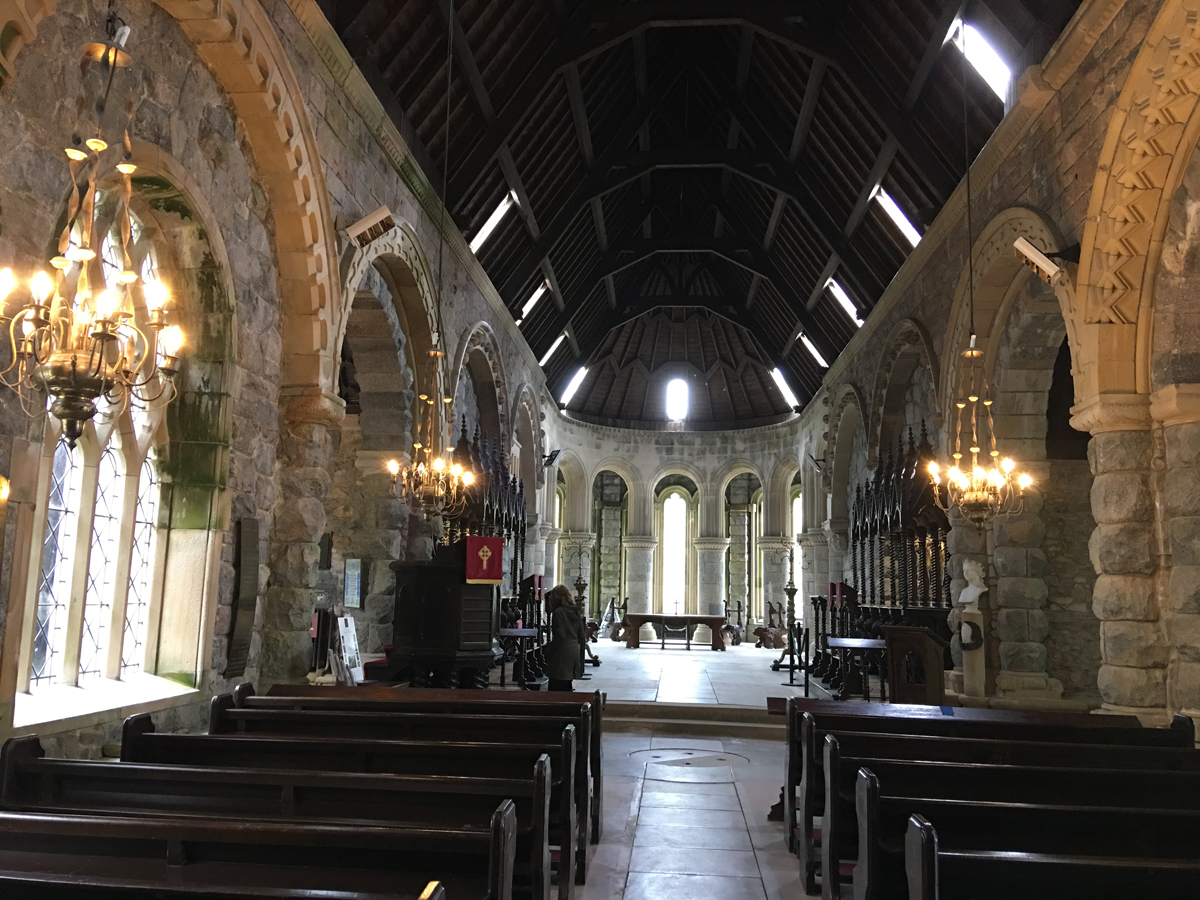
Looking east, up the nave to the chancel
What makes St Conan’s Kirk so extraordinary is the fact that during the second phase of its construction, Walter Douglas Campbell drew on his professional expertise in a daring and unusual way. Virtually every significant architectural period is represented somewhere in the kirk’s design. While I can’t pretend to have grasped them all, here is a selection:
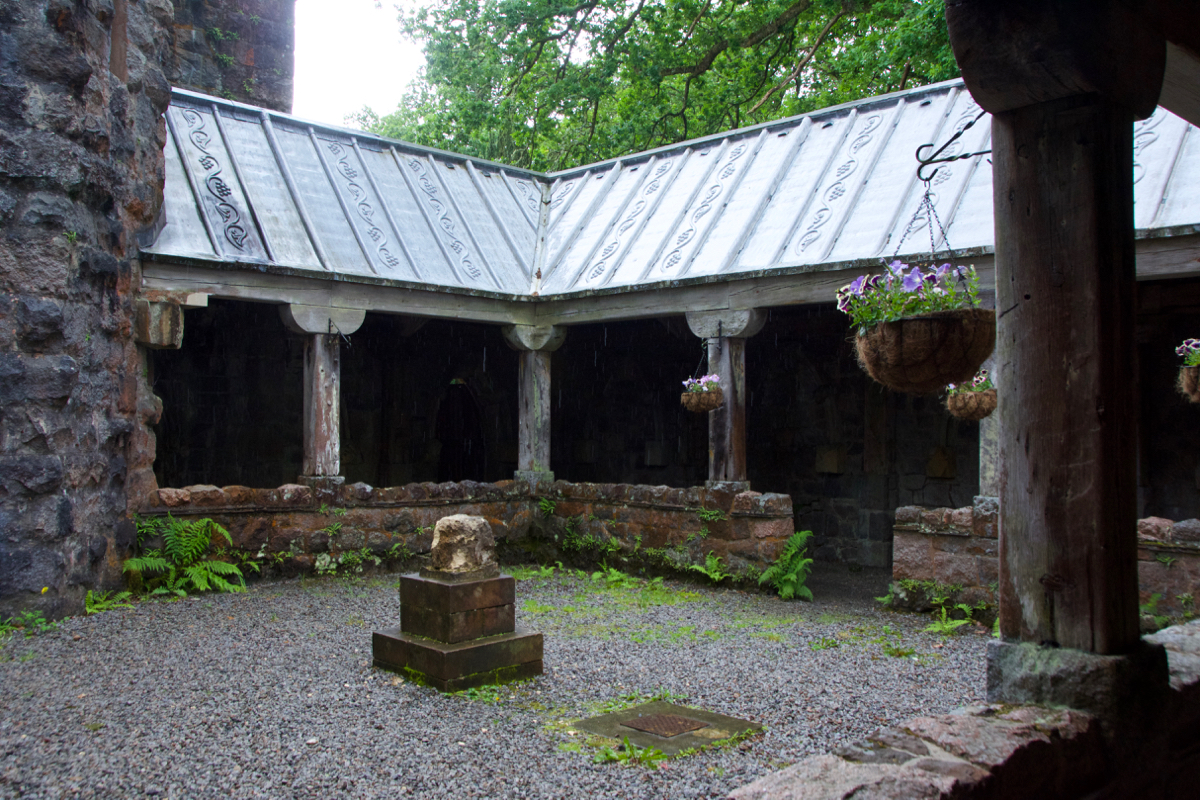 The Cloister Garth (above) is a lovely quadrangle with an open courtyard, the covered walkways supported by oak beams salvaged from two Victorian-era battleships, HMS Duke of Wellington and HMS Caledonia. Inset into the walls of the cloister are stone arches taken from the medieval chapel at Inchinnan, which was later demolished.
The Cloister Garth (above) is a lovely quadrangle with an open courtyard, the covered walkways supported by oak beams salvaged from two Victorian-era battleships, HMS Duke of Wellington and HMS Caledonia. Inset into the walls of the cloister are stone arches taken from the medieval chapel at Inchinnan, which was later demolished.
There’s a round ‘Norman’ tower, and some of the rounded arches and heavy cylindrical pillars around the apse (below) are distinctly Norman in appearance; one of my favourite parts of the church is the ambulatory, a semi-circular walkway leading around the back of the altar. This airy space is flooded with light from the long windows.
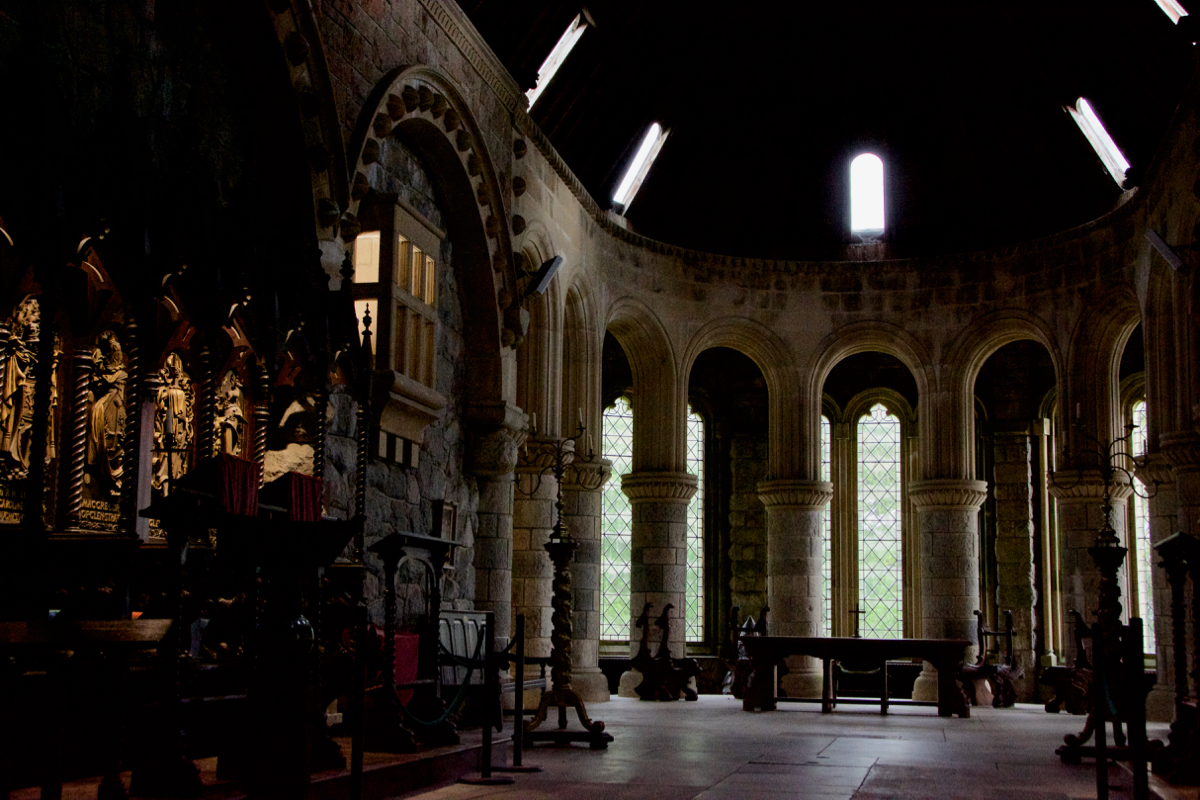
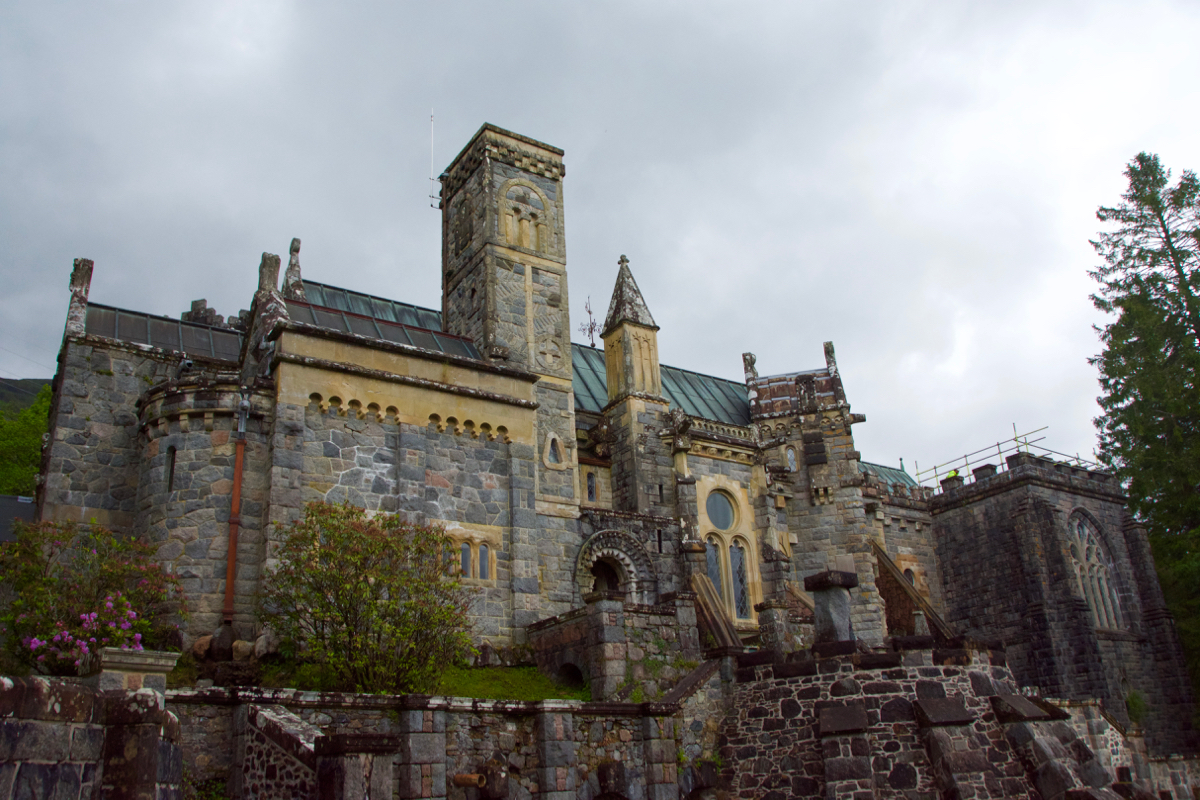 On the south side (above), a square-sided Saxon-style tower is decorated with leaf patterns in the stonework. Other architectural details include Gothic flying buttresses and a Romanesque arch above the entrance. On the roof, three gargoyles represent a dog chasing two hares.
On the south side (above), a square-sided Saxon-style tower is decorated with leaf patterns in the stonework. Other architectural details include Gothic flying buttresses and a Romanesque arch above the entrance. On the roof, three gargoyles represent a dog chasing two hares.
St Conval’s Chapel
St Conval’s chapel, one of three chapels added to the kirk, is dedicated to the missionary-saint who was associated with Inchinnan, the Douglas Campbells’ home in Renfrewshire. This chapel, which has Norman-style details, has a replica early Christian hermit’s cell to one side – a tiny enclosure with an interesting corbelled roof, in contrast to the fine timbers used in the chapel itself. The tomb in this chapel is that of the 4th Lord Blythswood, Walter’s brother.
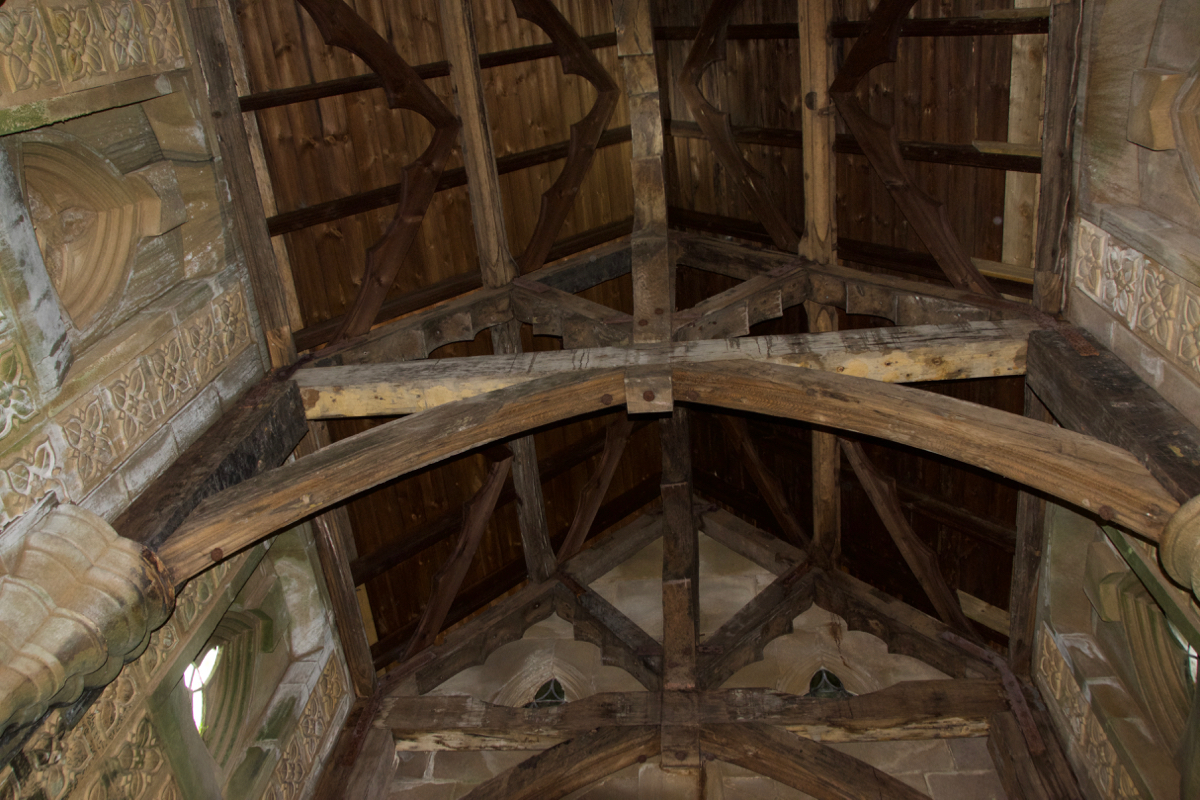
Roof of St Conval’s chapel
The Bruce Chapel
This chapel, on the south side of the church, is named after Robert the Bruce, who in 1308 defeated the forces of John Bacach, son of Alexander MacDougall (Lord of Argyll), in the Pass of Brander, just a few miles to the west. A fragment of bone from the leg of Robert the Bruce, apparently acquired when his grave was discovered in Dunfermline Cathedral, is interred beneath a carved effigy, the work of Hubert Paton. In the wall of the chapel is a clear glass window which came from the 15th century church of St Mary in South Leith. (This chapel is being restored at present, so I couldn’t view it.)
St Bride’s Chapel
At the west end, St Bride’s chapel has a window inspired by St Columba’s church on Iona (and in fact an original medieval window from Iona is inset into the wall next to the entrance from the cloister). In this beautifully decorated chapel the remains of Walter and Helen Douglas Campbell are interred. Neither of them married, and both seem to have devoted a large proportion of their lives to the successful completion of the kirk. An effigy adorns the tomb – a beautiful sculpture by Alexander Carrick, of Walter in Highland dress. Peter Hennessy explained to me that twice a year, sunlight streaming through a small star-shaped window in St Fillan’s Aisle shines directly onto Walter’s face. I love the connection with St Bride, the bringer of light.
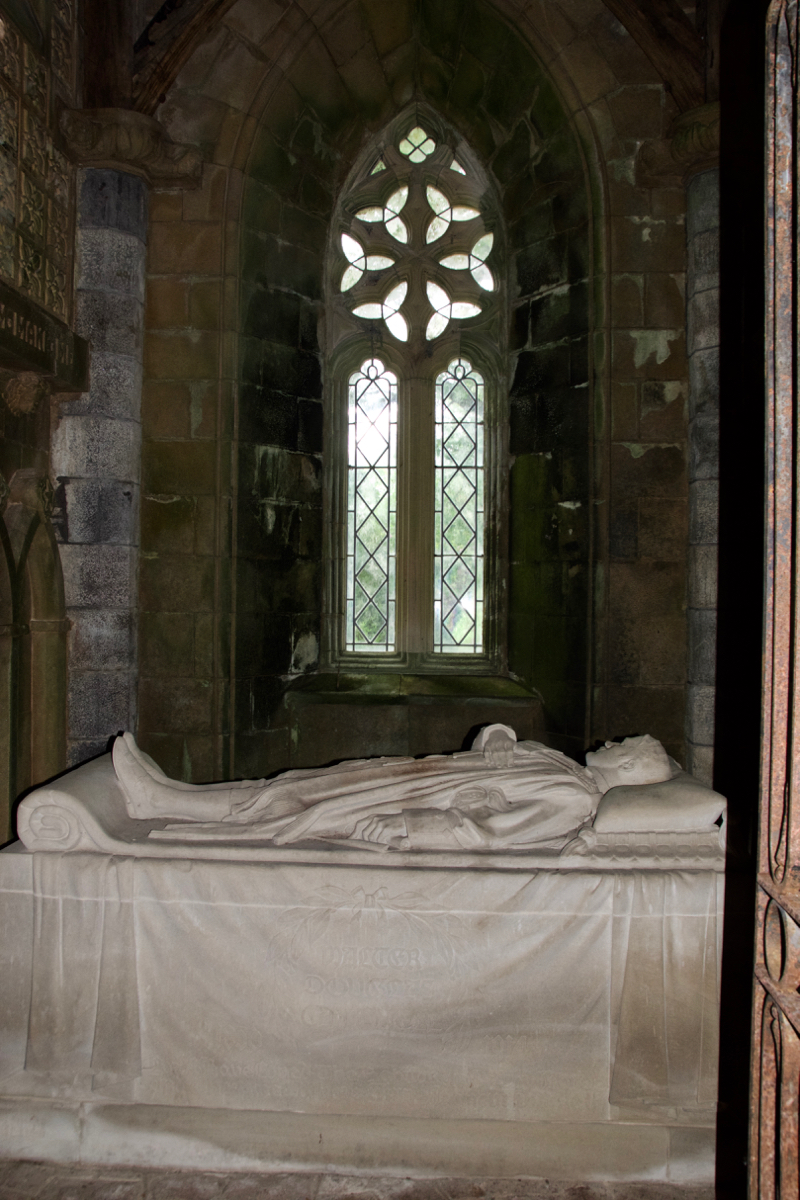
Above: effigy of Walter Douglas Campbell by Alexander Carrick and (below) the star-shaped window
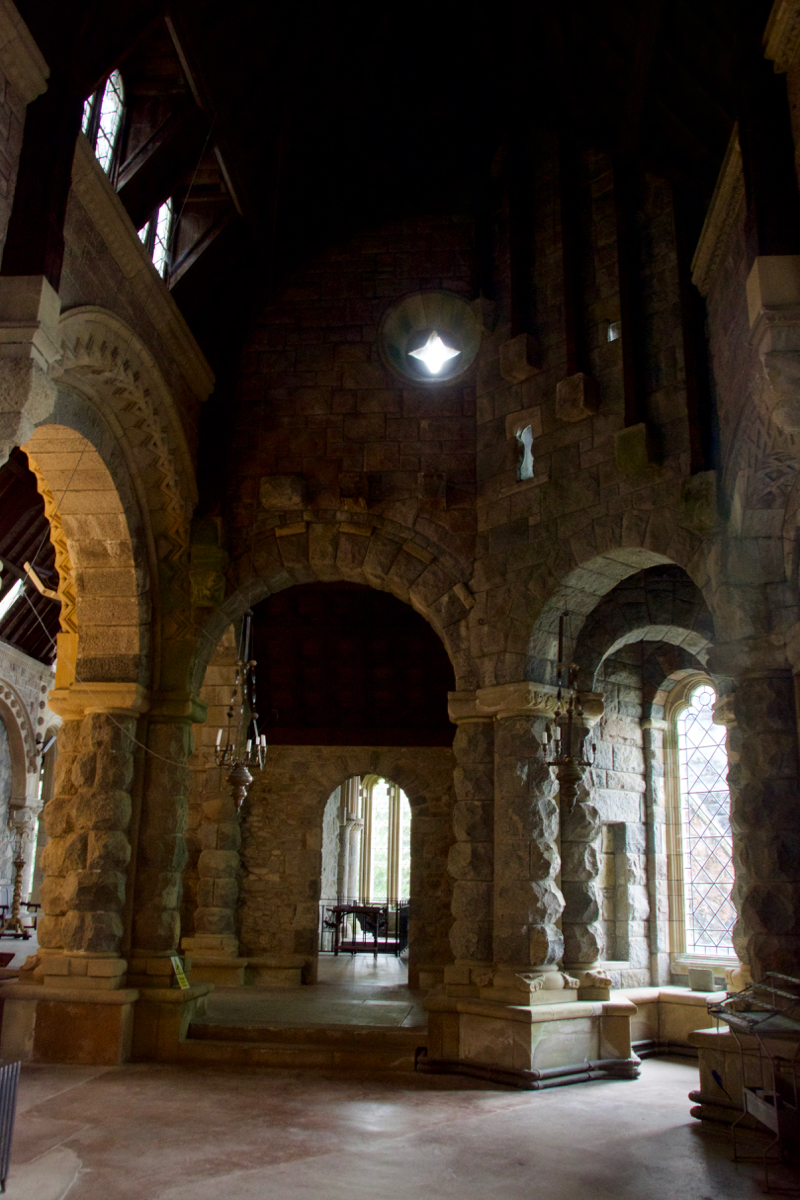
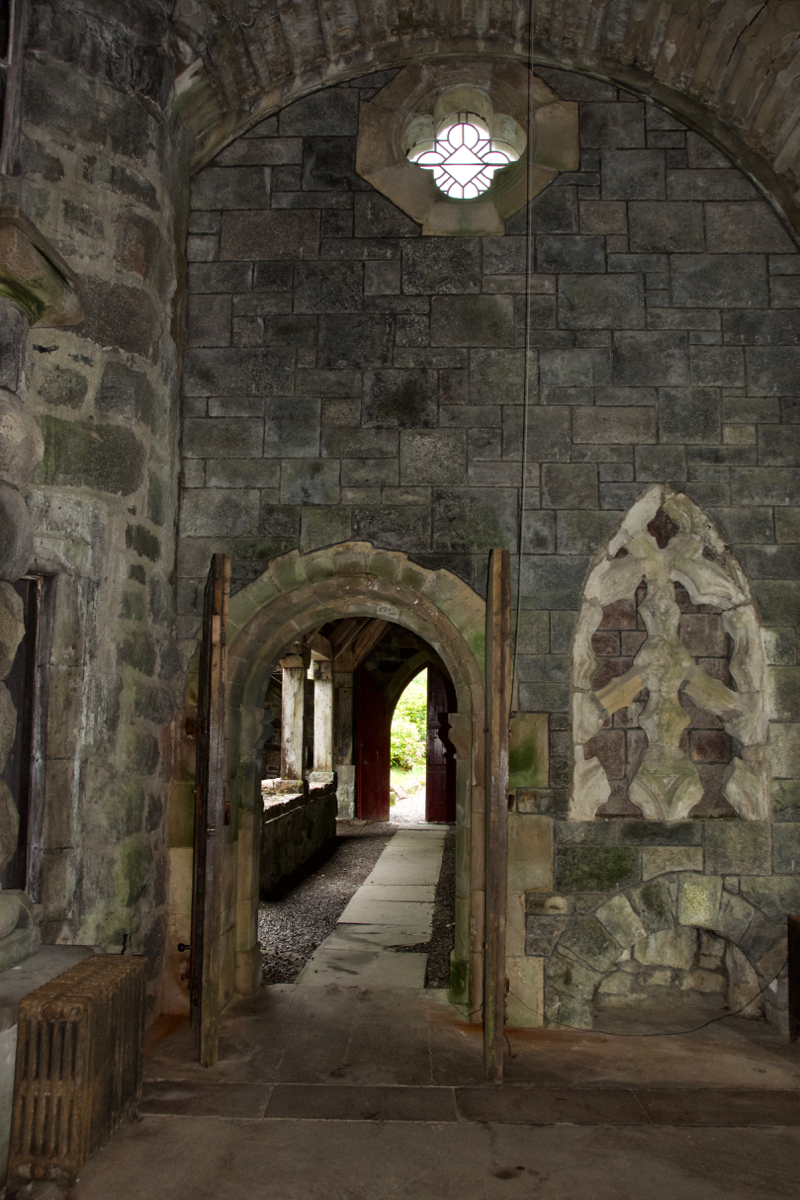
Above: original window from Iona, next to the entrance from the cloister
From the floor of the kirk, we climbed up a tightly twisting iron staircase and emerged onto a balcony looking south over Loch Awe. Rain was still misting the hills, but the view across the loch, studded with small islands, is never less than amazing. High on the south-facing wall, a statue of St Conan gazes out over the water. In the grounds of the kirk, a memorial cross is reminiscent of those marking the routes of early pilgrims, and Walter even arranged a circle of standing stones by the entrance gate. I’m tempted to call them Neo-Neolithic.
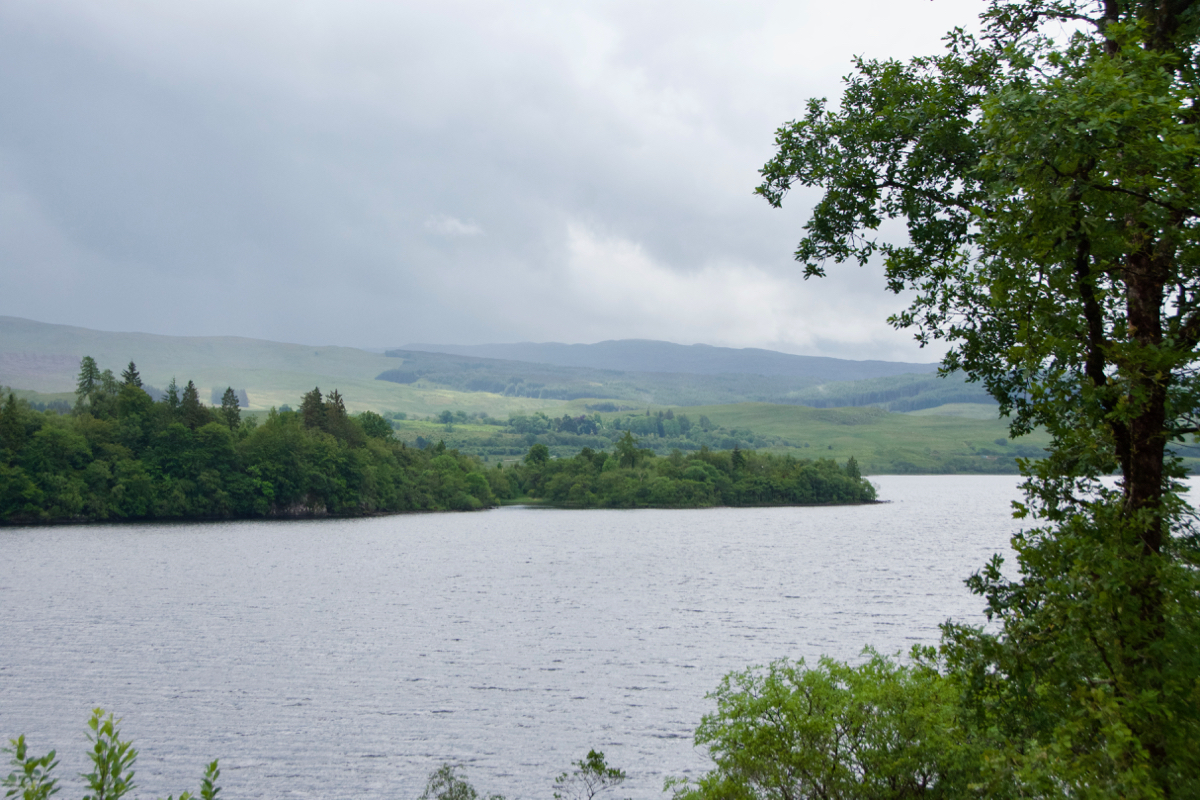
Above: View over Loch Awe from the balcony

Above: View from the west, showing the square cloister garth with Norman tower at one corner, and (below) Celtic-style cross
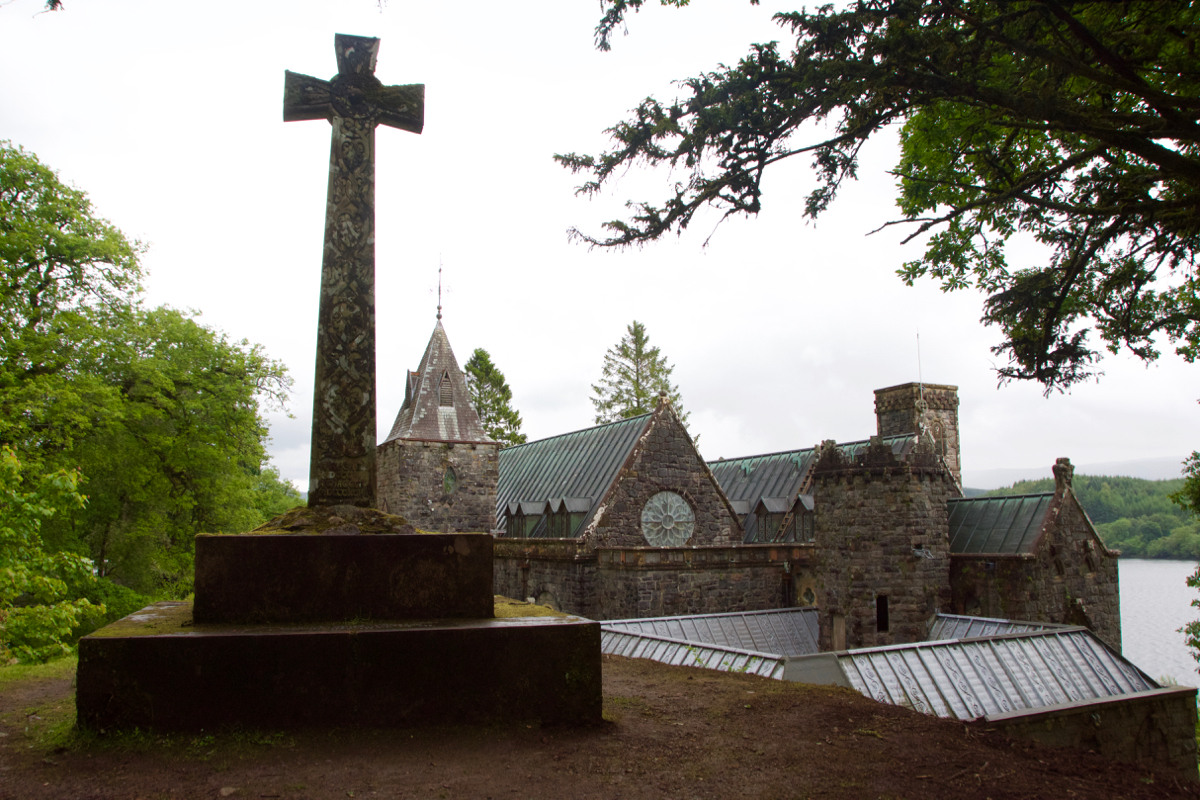 St Conan’s is blessed with some stunningly beautiful windows whose images are rich in heraldry and symbolism. The rose window at the west end, depicting a host of cherubs’ faces, was painted by Walter’s sister, Helen. Around the kirk, highly decorative iron gates and railings are the work of Thomas Hadden, one of the leading craftsmen of his day.
St Conan’s is blessed with some stunningly beautiful windows whose images are rich in heraldry and symbolism. The rose window at the west end, depicting a host of cherubs’ faces, was painted by Walter’s sister, Helen. Around the kirk, highly decorative iron gates and railings are the work of Thomas Hadden, one of the leading craftsmen of his day.
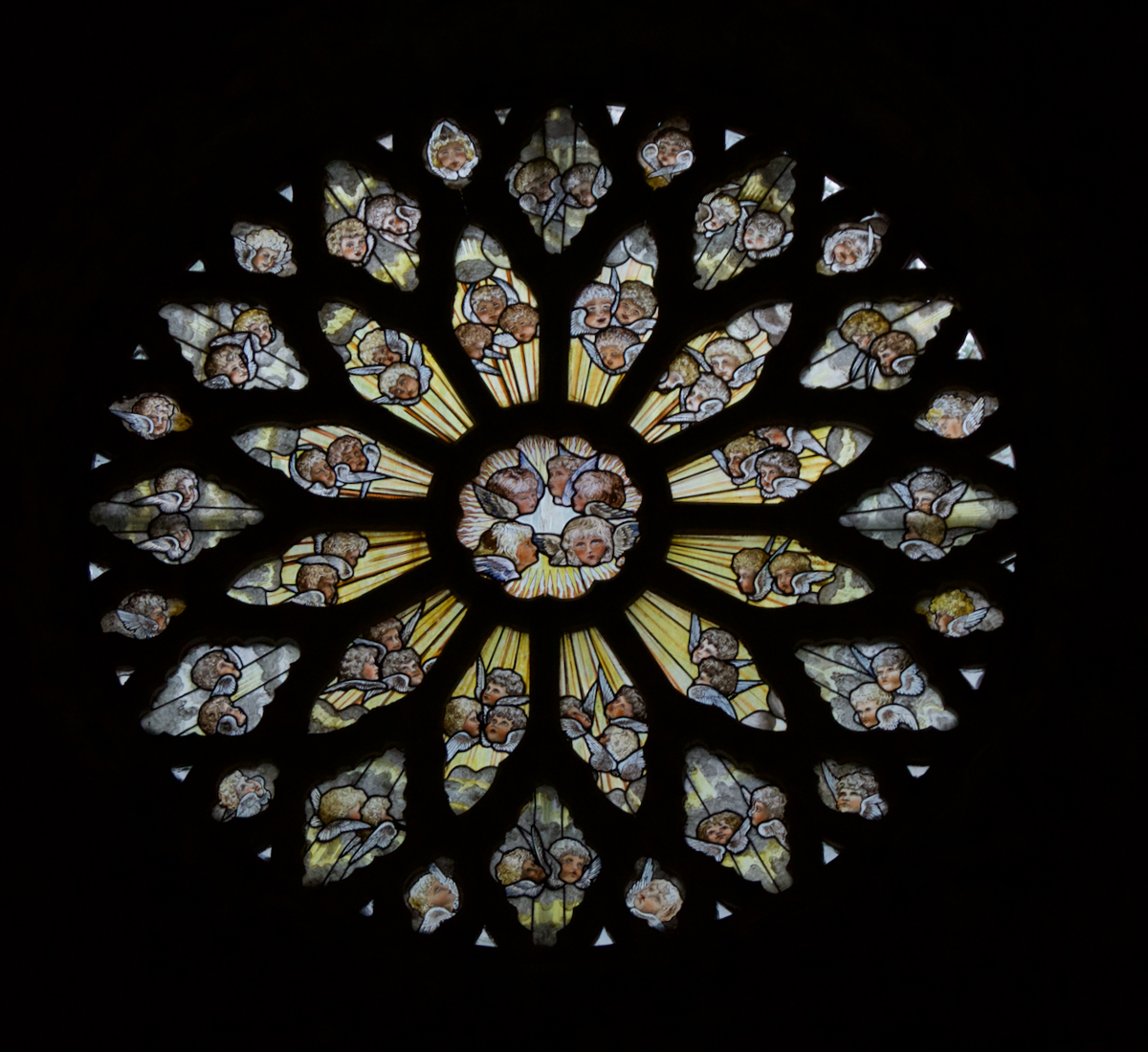
Above: window painted by Helen Douglas Campbell; below: McCorquodale window in St Fillan’s aisle
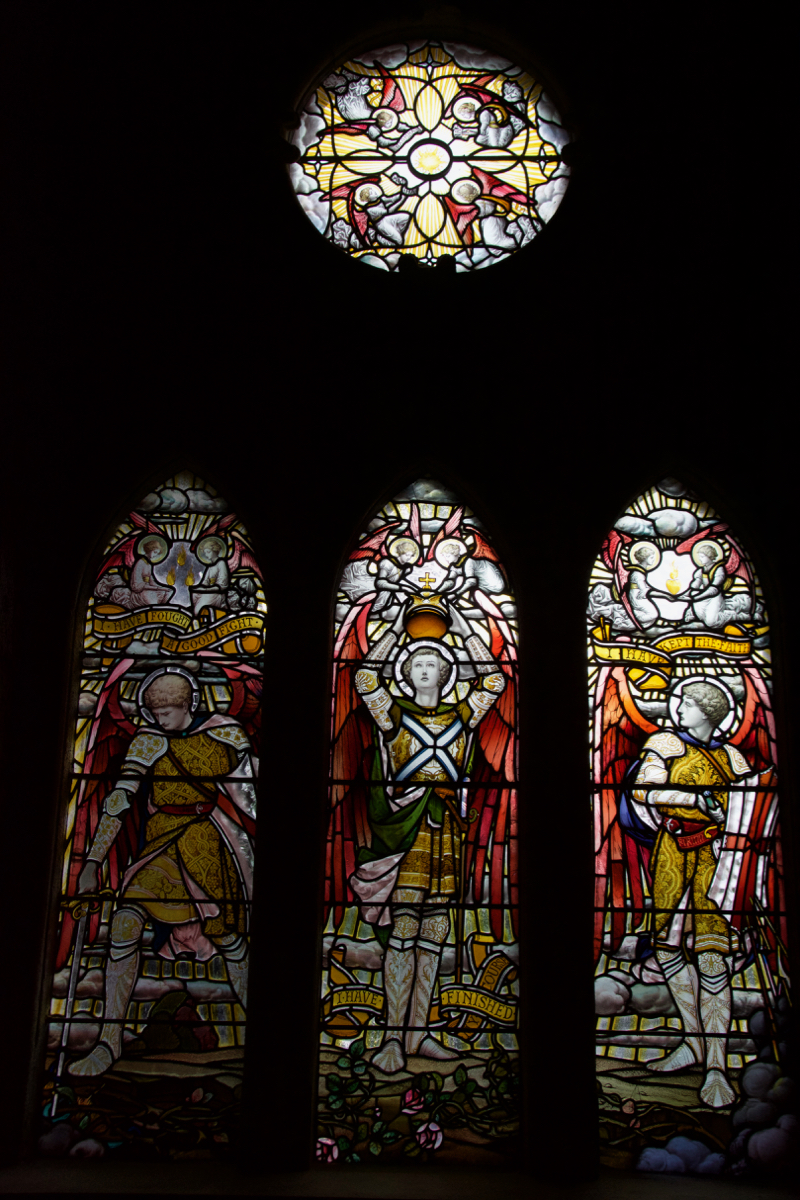
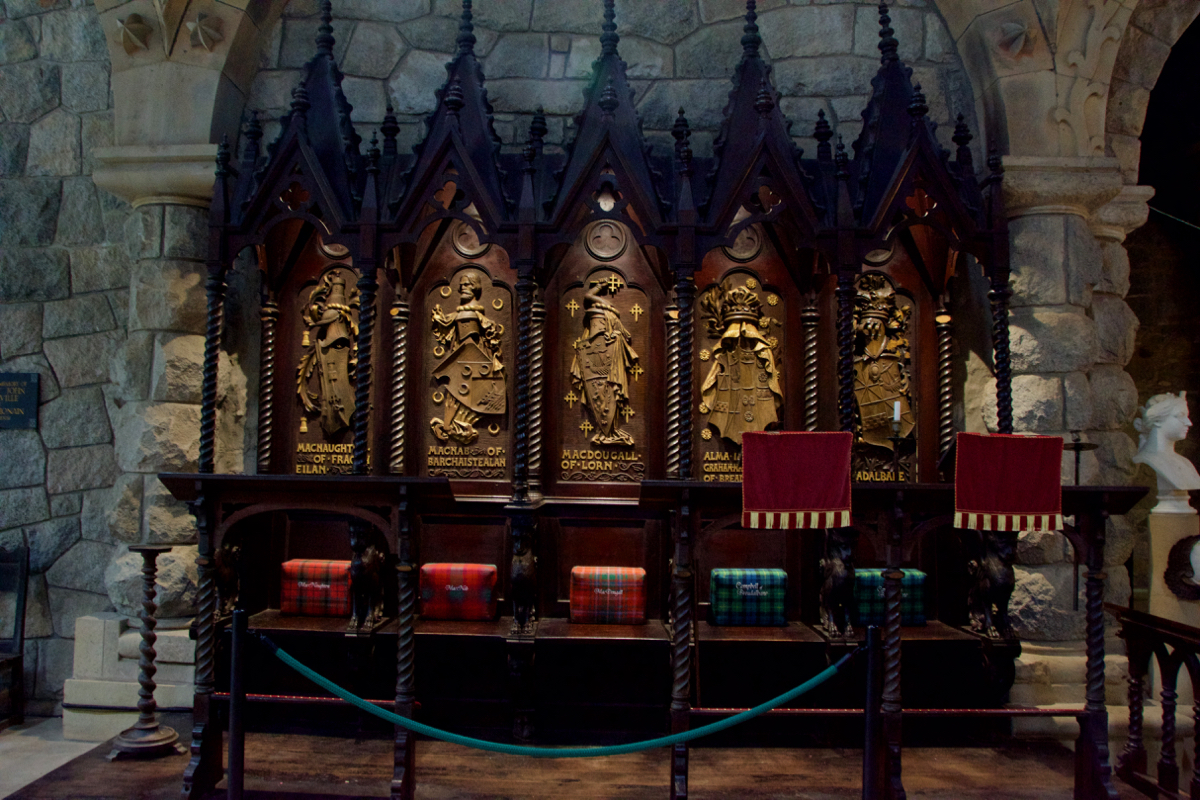
Above and below: Choir stalls depicting coats of arms
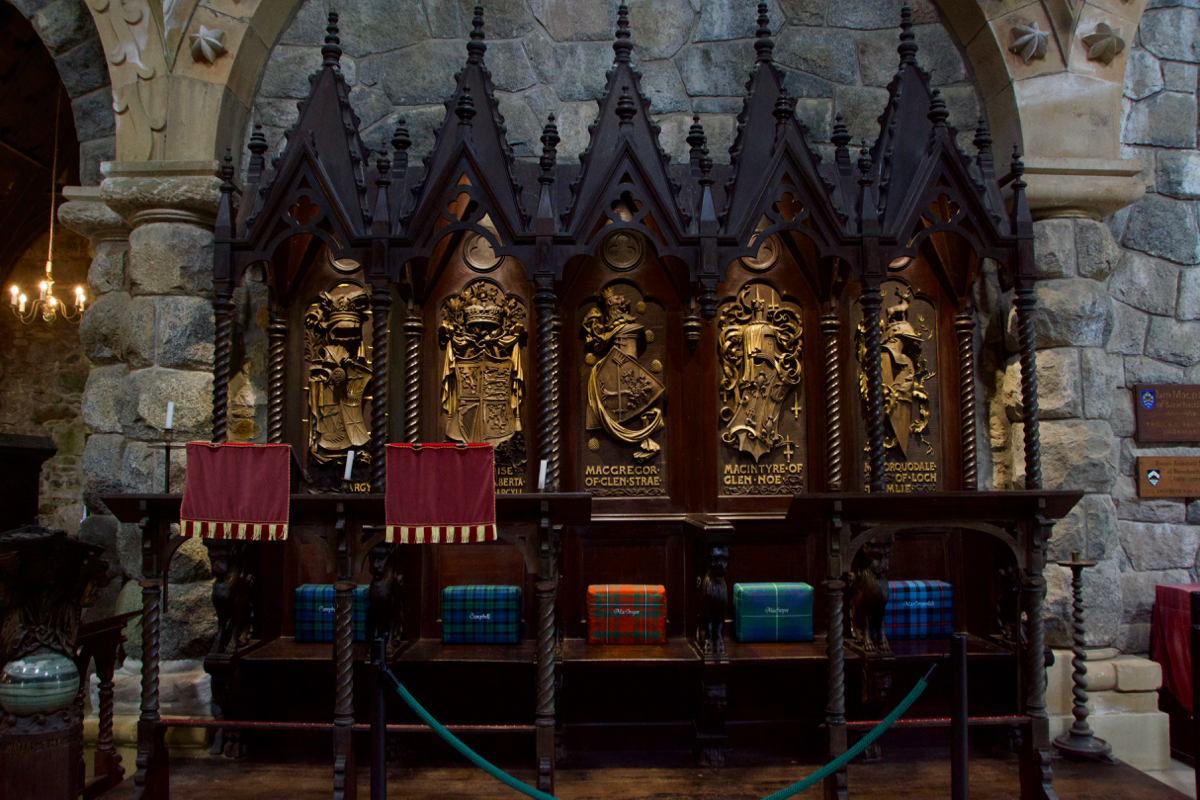
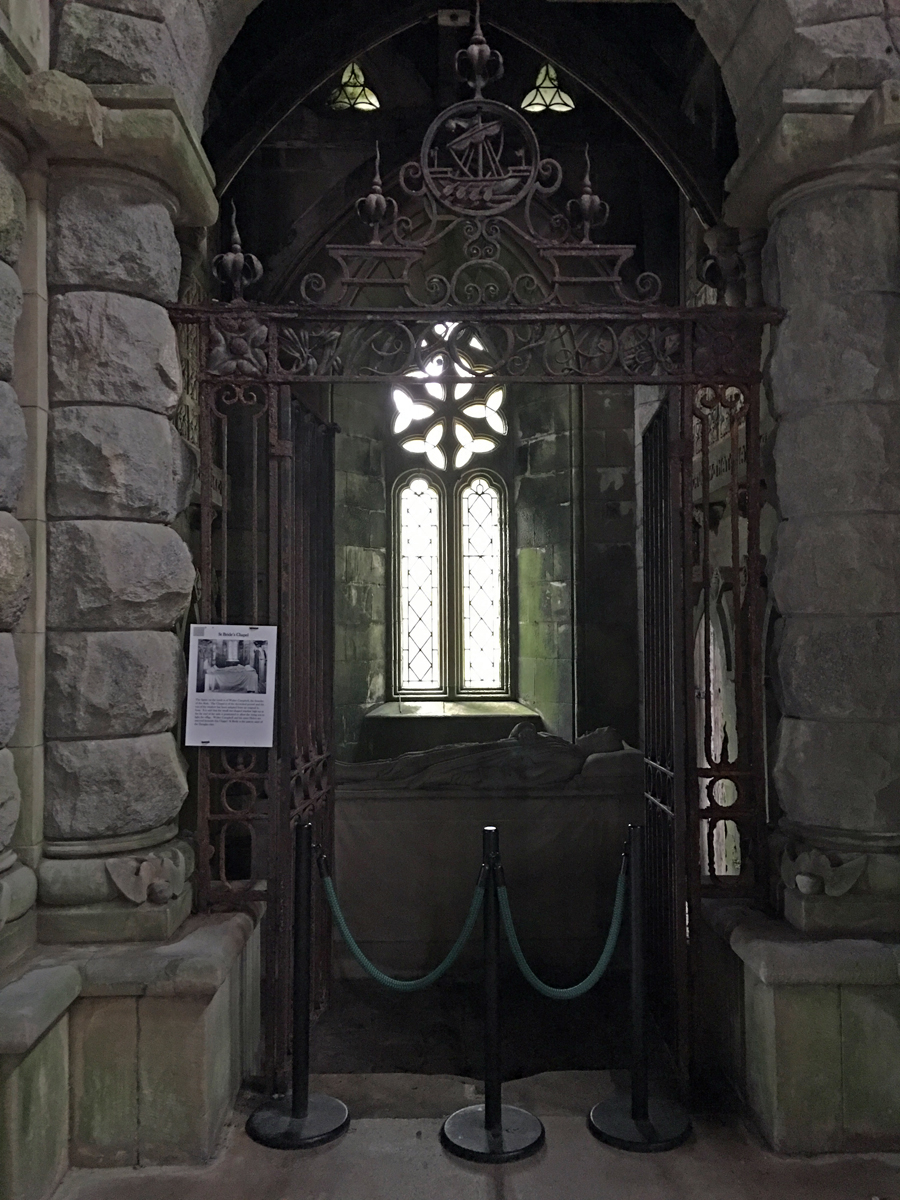
Ironwork by Thomas Hadden at the entrance to St Bride’s chapel
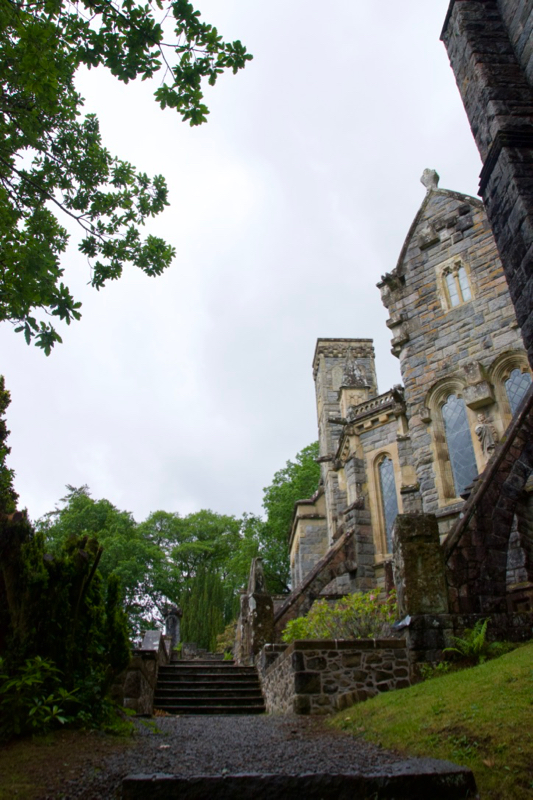
Terraces on the south side
Walter Douglas Campbell must have been a man of great energy and passion, and he was also a skilled woodcarver, as he created the elaborate organ screen in the nave. St Conan’s is a testament to his spirit and self-belief, and because it feels so personal you get a real sense of his character. “He was,” says the Kirk’s website, “more anxious to achieve beauty than consistency,” and the eclectic mix of styles is a celebration of art for its own sake, regardless of the overall effect when viewed as a whole. In this respect it is like no other church I’ve ever been in, and the quirkiness of its component parts is almost overpowering. But you don’t have to understand them all to appreciate its atmosphere, which is what unites it. St Conan’s is the legacy of a man who cared about the wellbeing of others, hoping that his gift would bring them joy. Over a century later, his wish is still being fulfilled.
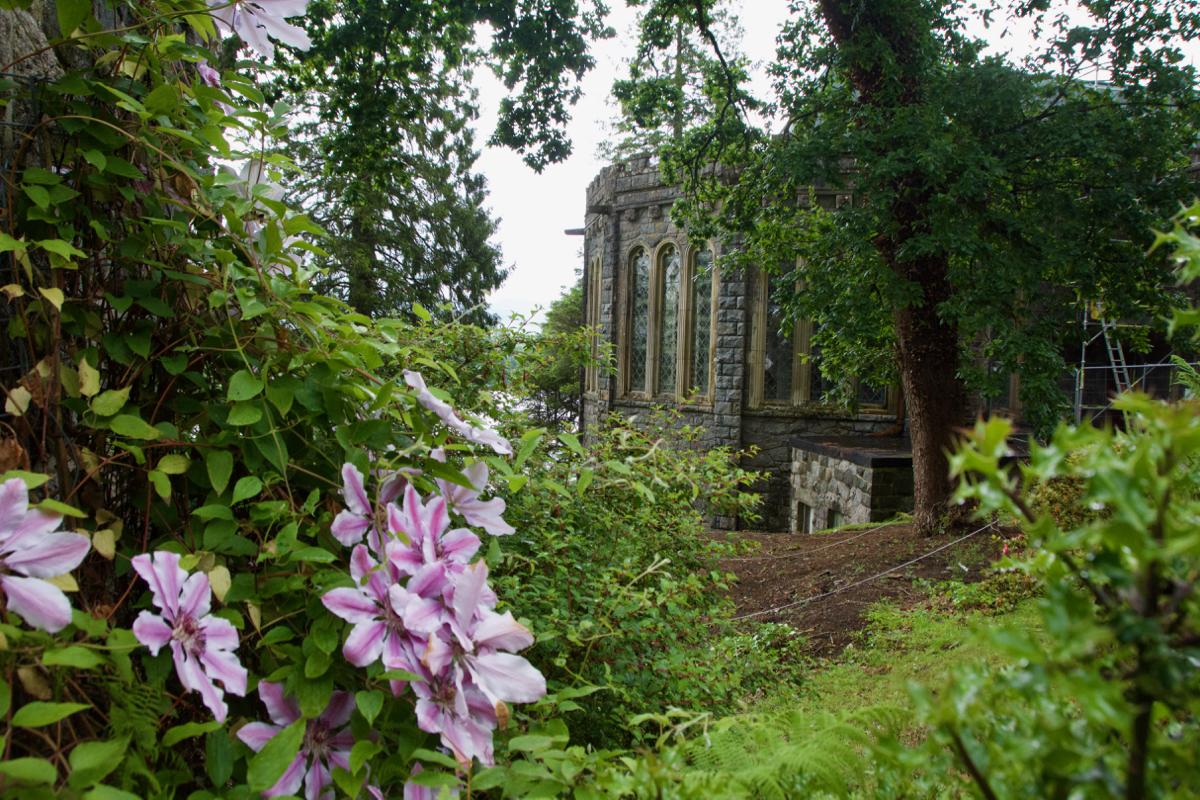
Notes, reference and further reading:
- St Conan’s Kirk
- Canmore
- Undiscovered Scotland
- Scotland’s Churches Trust
- St Conan’s Well in Dalmally
- Saints in Scottish Place Names
St Conan’s Kirk is a Chapel of Ease belonging to Trustees. Services are held every month – please check the Kirk’s website for more details. You’ll also find more information about opening times, services, weddings, and forthcoming events. There is no entry fee but donations are warmly welcomed, as they contribute towards the ongoing cost of maintaining this beautiful building.
Please note that there is no public access to the spiral staircase.
Many thanks to Peter Hennessy, Chair of the Friends of St Conan’s Kirk
Images © Jo Woolf

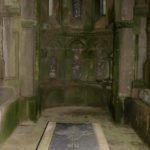
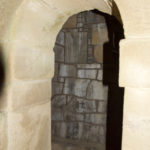
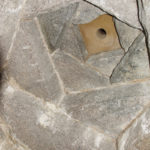
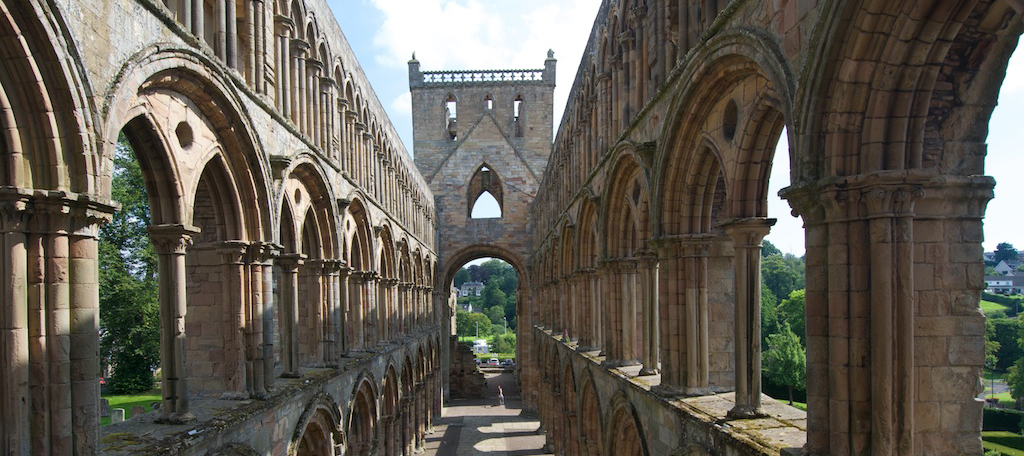
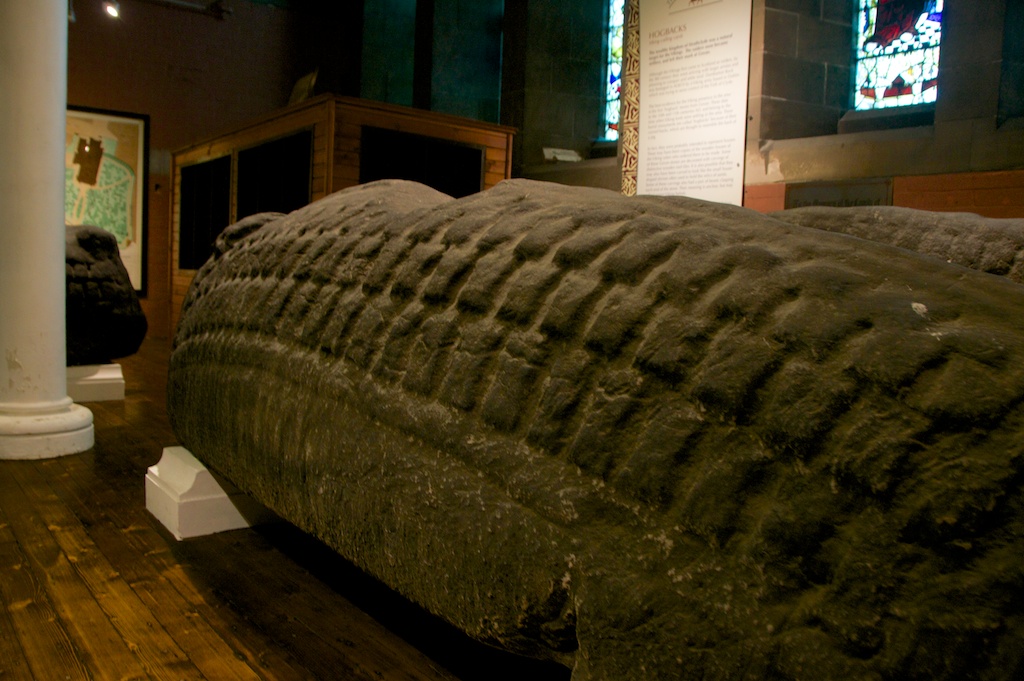
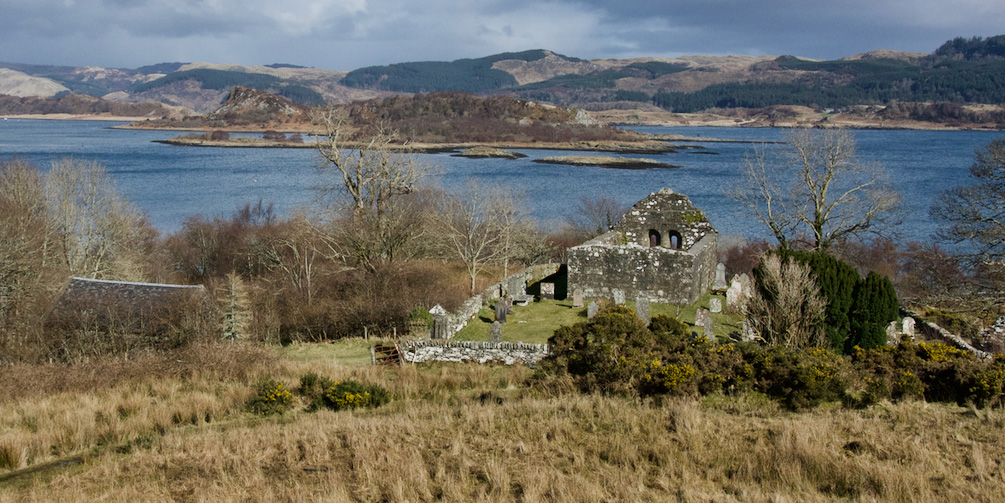
10 Comments
bitaboutbritain
Astonishing place – looks like something out of an Arthurian legend. It’s beautiful – love the different styles which, somehow, work. And I’m impressed that Walter wanted to use locals to build it.
Jo Woolf
Haha, yes, I see what you mean! It seems to defy all sense of scale because it looks compact at first and then seems to have endless different parts. I loved that about Walter too – he obviously cared for the welfare of the local community.
Kati Waitzmann
Always good fun to read your posts Jo! Love the thouroughly researched information and the images are amazing. It is a win win for me -always. Thank you. Kati
Jo Woolf
Thank you so much, Kati! That’s lovely to know. Really glad you enjoyed this – certainly an amazing place to explore!
montucky
Fasxinating place! I can only imagine what a heroic task it must have been to build it!
Jo Woolf
Yes, isn’t it? A real lifetime’s labour of love. I really enjoyed learning about it.
Robert Hay.
Dear Jo, that is a most interesting article on that beautiful building in such an out of the way location.
You may be able to help me with a query I’ve had for a long time re a carving on Iona, but I’d like to send you some correspondence on it separately if you would be kind enough to send me your email address.
I live in Perth, Western Australia which makes it difficult for me to do actual physical research.
Jo Woolf
Thank you very much, Robert – really glad you enjoyed reading about St Conan’s Kirk! It’s such a fascinating building. I would be delighted to see if I can help with your query about the carving – you can email me at: jo@thehazeltree.co.uk Best wishes, Jo
Craig Smith
I visited recently on my way to Ben Cruachan. What a lovely place! The view out the back across Loch Awe is amazing
Jo Woolf
Yes, it certainly is! I really enjoyed visiting and learning about its history. Hope you enjoyed your trip to Ben Cruachan!